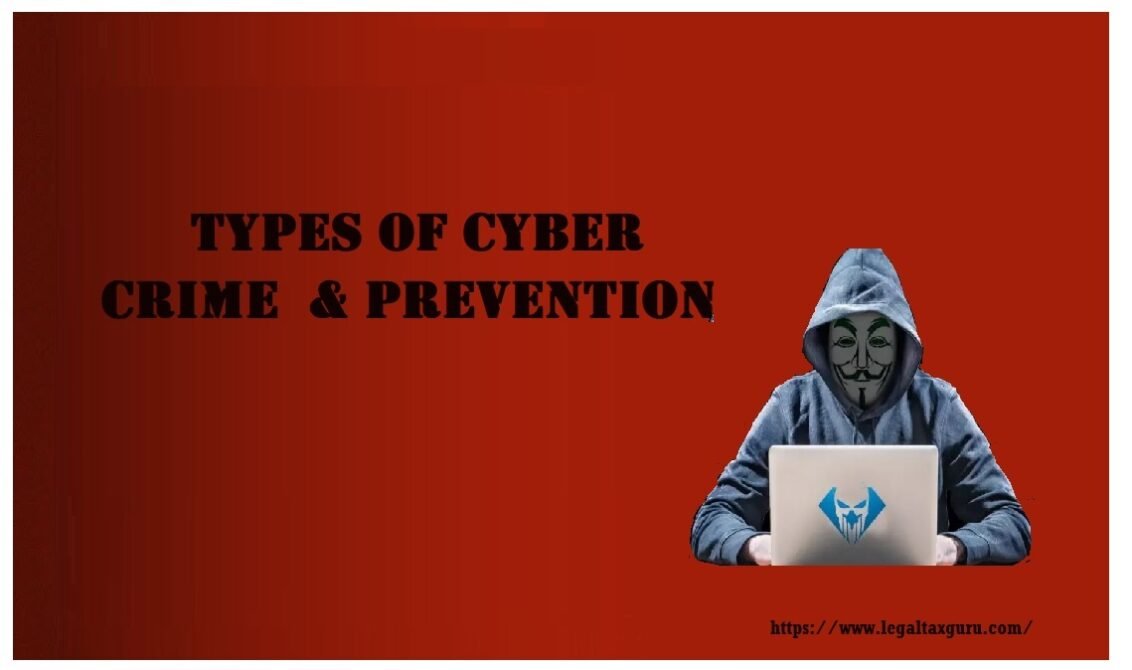Types of Cyber crime & Prevention
Malware attacks-
Where a computer system or network is affected with a computer virus or other type of malware than a computer compromised by malware could be used by cybercriminals for many purposes. These includes stealing personal data and using the computer to carry out other criminal acts or causing damage to data.

Phishing-
When spam emails or other forms of communication are sent with the motive of tricking recipients into doing something that threatens their security. Phishing campaign messages may include affected attachments and links to malicious sites or they may ask the recipient to respond with personal data.
Spear campaign is also the type of the phishing campaign. Its targeted phishing campaigns which try to trick specific individuals into threatening the security of the organization they work for.
Cyber Bullying-
Cyber Bullying is also known as internet bullying. It includes sharing harmful and humiliating content about someone else which causes embarrassment and can be a reason for the occurrence of mental stressing problems. It became very common especially among teenagers.
Cyber Stalking-
It can be known as unwanted preserving content from someone targeting other individuals online with the motive of controlling and scaring like unwanted repeatedly calls or messages. In more severe cases, cyberstalking can escalate to ‘sextortion,’ where the victim is threatened with the release of personal pictures or videos in exchange for money or sexual favors. Cyberstalking can also lead to cyberbullying, which poses a lasting threat to the mental and physical health of the victims
Distributed DoS attacks-
These are also a type of cybercrime attack that cyber criminals use to bring down a system or network. Sometimes connected internet of things devices are used to begin DDoS attacks.
These types of attack overwhelms a system by using one of the standard communication protocols it uses to spam the system with connection requests. Criminals who are moving out cyber extortion may use the threat of a DDoS attack to demand money. A DDoS may be used as a distraction strategy while other type of cybercrime takes place.
Social Media Frauds-
The use of social media fake accounts to play any kind of harmful activities like impersonating other users or sending embarrassing or threatening messages. Also one of the easiest way and most commonly social media scam Email spam.
Online Drug Trafficking-
High rise of cryptocurrency technology it became easy to send money in a secured private way and complete drug deals without drawing the attention of law enforcement. This conduct to a rise in drug marketing on the internet.
Illegal drugs like cocaine or heroin etc. are commonly sold and traded online specifically on what is known as the “Dark Web” site.
Electronic Money Laundering-
It is also known as transaction laundering. It is based on unknown companies and online business that makes approvable payment methods and credit card transactions but with incomplete payment information for buying unknown products.
Cyber Extortion-
It is the demand for money by cyber criminals to provide back some important data they have stolen or stop doing malicious activities like denial-of-service attacks.
Identity Theft-
It occurs when a criminal gains access to a user’s confidential data to steal funds or participate in tax and health insurance fraud. They can also open an internet account in person’s name and use his/her name to plan a criminal activity and claim government benefits in his/her name. They may do this by collecting out user’s passwords through hacking or retrieving confidential information from social media and sending phishing emails.
Password Attacks
These actions are simply meant to decrypt or even attempt to acquire a user’s password with malicious intentions. Attackers can employ Dictionary Attacks, Password Sniffers, or even Cracking programs for such purposes. These attacks involve accessing passwords that are either exported or stored in a file.”
How to Fight Cybercrime?
In the modern time of technology hackers are hacking our systems and no one is safe. The average dwell time it takes a company to detect a cyber breach is more than two hundred days. Many internet users are not dwelling on the fact that they may get hacked or many rarely change their update passwords. Educate yourself as well as others too on the preventive measures also you can take in order to protect yourself as an individual or as a business.
- Make sure that you are using up-to-date security software like antivirus.
- Implement the best possible security settings and implementations for according to your environment.
- Do not browse untrusted websites or always be careful when downloading unknown files and also careful when viewing Email attachments.
- Always use strong authentication methods as well as keep your passwords as strong as possible.
- Never share confidential or personal information online or on social media accounts.
- Also educate your child about the disadvantages of internet usage and always keep monitoring their activities.
- Always ready to make an instant react when falling victim to cybercrimes by referring to the police authority.
- Use VPN when needed.
- Always be mindful of which website URLs you visit.
- Be aware of pop-ups and fraudulent emails.
- Manage your social media Privacy and settings.
- No GST on Penalties, Late Fees/Panel Interest, fine levied or collected by RBI: GST AAR MAHARASHTRA
- FINANCE BILL 2024: INSERTION OF NEW SECTION 128A IN CGST ACT 2017
- FINANCE BILL 2024: INSERTION OF SECTION 74 A IN CGST ACT, 2017
- Finance Bill 2024: Amendment to Section 16 of CGST Act, 2017
- UNION BUDGET 2024: KEY HIGHLIGHTS ON INCOME TAX

